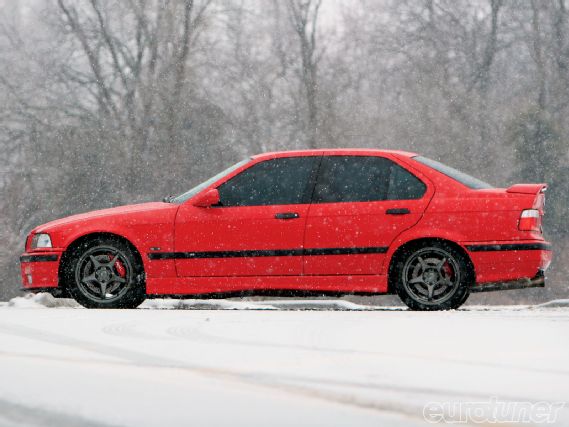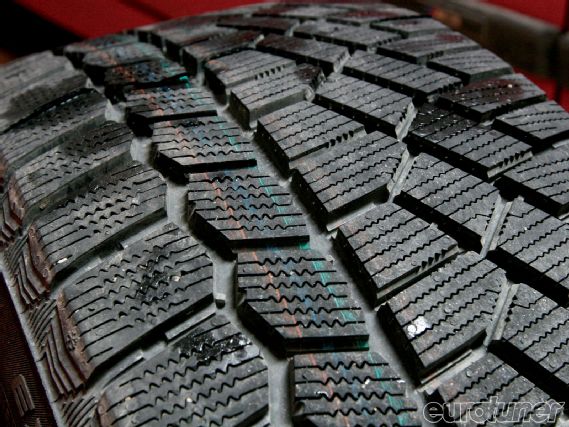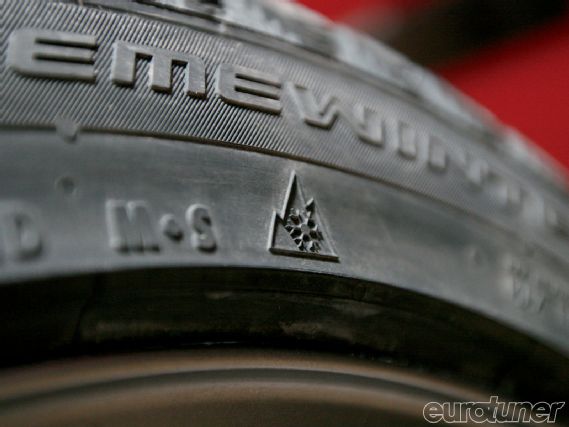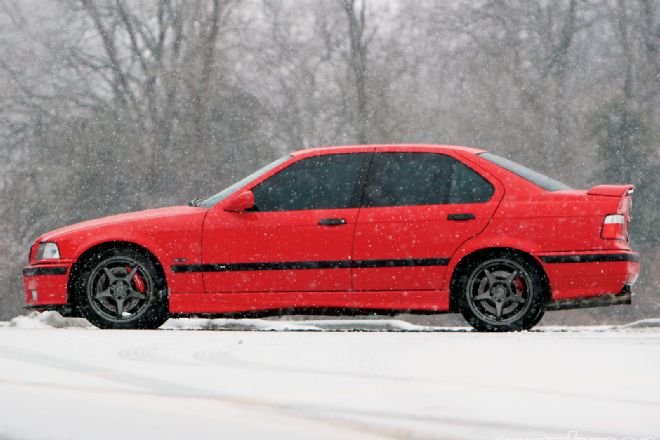Having lived in Southern California most of my life, I recently moved to Kansas City and the biggest culture shock was a little bit of snow when driving.
 |
We put Project M3 through some winter tire testing
|
We put Project M3 through some winter tire testing
About seven to ten days out of the year, we get to enjoy some Colin McRae-style driving. However, the 2009/10 winter had the third heaviest snowfall on record. And while it can be fun, snow driving can also be very dangerous, especially with the wrong tires on a rear-wheel drive car without traction control like on our Project M3!
Until now, the M3 had been rolling on Continental's ContiSportContact 3 (CSC3) tires, which are among the best high-performance tires available. But even with new, deep tread a high-performance tire is useless in snow.
We've documented the problems of summer tires in the winter in previous issues and explained the need for specialized winter tires. Yet I was still surprised to get stuck on my near-flat driveway.
Having experienced a few dangerous situations in the snow, I finally broke down and mounted a set of Continental's new ExtremeWinterContact tires. You've heard us talk about the improvements real winter tires can have in the snow, and we decided we'd get some of our own to numbers to prove the point.
 |
Conti's ExtremeWinterContact has small sipes in the tread to cut into the snow. They proved to be more than twice as good as high-performance tires in light snow
|
Conti's ExtremeWinterContact has small sipes in the tread to cut into the snow. They proved to be more than twice as good as high-performance tires in light snow
I say "real" winter tires because some manufacturers place the M+S (short for "Mud and Snow") stamp on many tires, which indicates it's an all-season tire. Only if you see a mountain/snowflake mark does it show the tire's been tested and approved for snow by the Rubber Manufacturer Associations of both the United States and Canada.
Testing
Our perfect test day included 0.5" snow accumulation on the ground during a snowy 25°F day - Conti recommends you switch to winter tires at 45° or lower, because below that the rubber becomes inflexible on most "summer" tires and can't conform to the road surface to grip it properly. This is also right about where I'm at my wit's end driving the M3 on CSC3s.
Testing was limited to 30mph because, quite frankly, anything faster was too scary - losing traction with light throttle stabs in fifth gear.
Armed with our GPS-based PerformanceBox from Vbox USA, our baseline on CSC3s showed a best 0-30mph acceleration in second gear of 16sec, covering more than 390ft - not stellar when you consider most cars do this in 2sec and 70ft in the dry in first gear.
 |
The mountain/snowflake symbol indicates the tire's been tested and approved for winter snow and ice use
|
The mountain/snowflake symbol indicates the tire's been tested and approved for winter snow and ice use
When we tried to brake, the car barely responded, taking 8.2sec and an alarming 177ft to come to a halt - about the distance it would take from 80mph in the dry!
Total distance covered from 0-30-0mph was a whopping 567ft - that's nearly two football fields!
Within an hour, the M3 was rolling on the new ExtremeWinterContact tires (EWC). Although our CSC3s were 235/40 R17s, we ordered 225/40 EWCs because a narrow tire provides better snow traction.
On the first stab of the throttle, the difference was immediately apparent. And even though more snow had accumulated, the 0-30mph acceleration dropped to 7sec and was covered in only 163ft.
Braking to a standstill was achieved in an impressive 99ft and took 4.4sec, saving us nearly five car-lengths over the summer tires.
All told, the 0-30-0mph test resulted in an improvement worth more than an entire football field compared to the CSC3s, even at this very low speed. Imagine the difference at 50mph!
What you need to consider is the scenario where you pull away from a light in snow, reach 30mph and have to brake suddenly to avoid a car that's pulled out. On "summer" tires, you're going to collide with the car and injury could ensue. With proper winter tires, you have the ability to stop or swerve around it. Either way, your survival prospects are far greater.
FWD/AWD
One area we didn't test was dry traction in freezing weather. Continental doesn't kid when they say summer tires aren't intended for use below 45°F - a couple of stabs on the throttle in second gear on roads without snow at 25°F confirmed this. And while the CSC3s would break loose immediately, the narrower EWCs actually hooked up through to redline! And while we didn't have a chance to actually measure the difference, it was vastly improved.
The extra-soft winter tread is the reason, but that will reduce the tires' life in warmer weather. Winter tires aren't intended for use year round, but when I'm armed with EWC in the winter I'm confident of getting home.
Consider winter tires like track tires - you fit then to do a specific job at a specific time.
Oh, and while owners of AWD and FWD cars do have slightly more winter traction than RWD, this only goes for acceleration. Even AWD owners should know braking ability depends entirely on the tires, even with ABS.
ACCEL ACCEL BRAKING BRAKING BRAKING TOTAL TOTAL 0-30mph 0-30mph 30-0mph 30-0mph Peak G 0-30-0mph 0-30-0mph TIRES TIME DISTANCE TIME DISTANCE DECELERATIION TIME DISTANCE 235/40 R17 ContiSportContact 3 16.00 sec 390.1 ft 8.23 sec 176.7 ft -0.36 G 24.23 sec 566.8 ft 225/45 R17 ExtremeWinterContact 7.05 sec 162.6 ft 4.38 sec 99.5 ft -0.57 G 11.43 sec 262.3 ft Improvement (actual) 8.95sec 227.5ft 3.85sec 77.2ft 0.21G 12.8sec 304.5ft Improvement (percentage) 227% 240% 188% 176% 58% 212% 216%
The Conti winter tires were so much better on a thin layer of snow, they had hit 30mph and stopped before the CSC3s hit 22mph, saving a football field in distance

